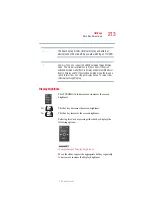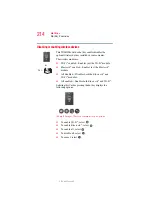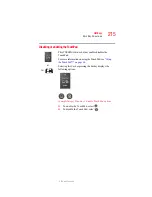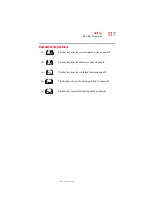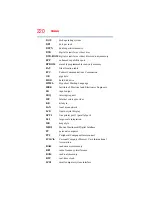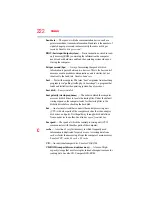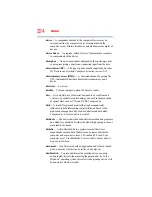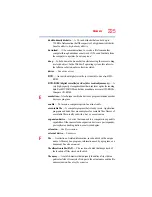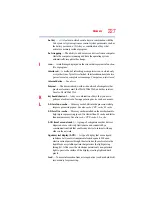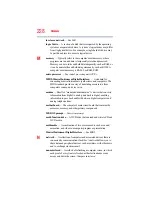
Glossary
225
double-density diskette
— A 3.5-inch diskette that can hold up to
720 KB of information (half the capacity of a high-density diskette).
See also
diskette, high-density diskette.
download
— (1) In communications, to receive a file from another
computer through a modem or network. (2) To send font data from
the computer to a printer. See also
upload
.
drag
— To hold down the mouse button while moving the cursor to drag
a selected object. In the Windows
®
operating system, this refers to
the left mouse button, unless otherwise stated.
driver
— See
device driver
.
DVD
— An individual digital versatile (or video) disc. See also
DVD-
ROM
.
DVD-ROM (digital versatile [or video] disc read-only memory)
— A
very high-capacity storage medium that uses laser optics for reading
data. Each DVD-ROM can hold as much data as several CD-ROMs.
Compare
CD-ROM.
E
emulation —
A technique in which a device or program imitates another
device or program.
enable
— To turn on a computer option. See also
disable
.
executable file
— A computer program that is ready to run. Application
programs and batch files are examples of executable files. Names of
executable files usually end with a .bat or .exe extension.
expansion device
— A device that connects to a computer to expand its
capabilities. Other names for an expansion device are port expander,
port replicator, docking station, or network adapter.
extension
— See
file extension
.
external device
— See
device.
F
file
— A collection of related information, saved on disk with a unique
name. A file may be a program, information used by a program, or a
document. See also
document.
file allocation table (FAT)
— The section of a disk that keeps track of
the location of files stored on the disk.
file name
— A set of characters that uniquely identifies a file within a
particular folder. It consists of two parts: the actual name and the file
name extension. See also
file extension
.



